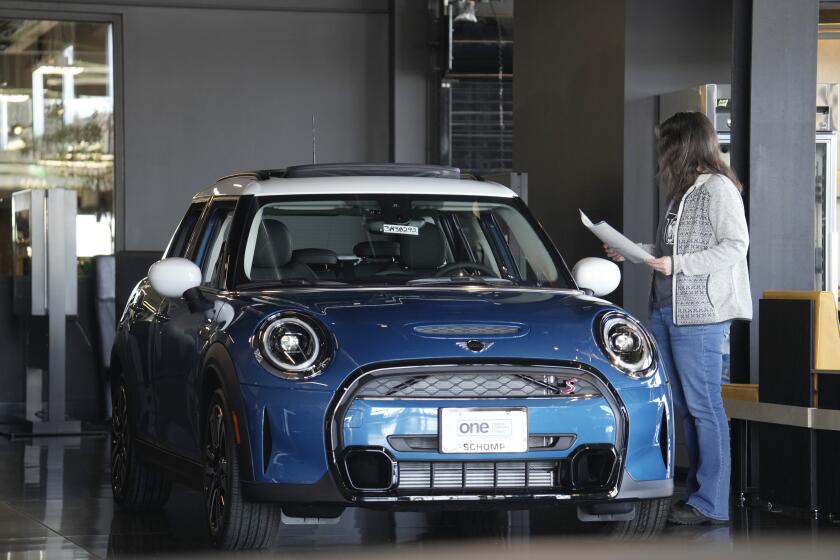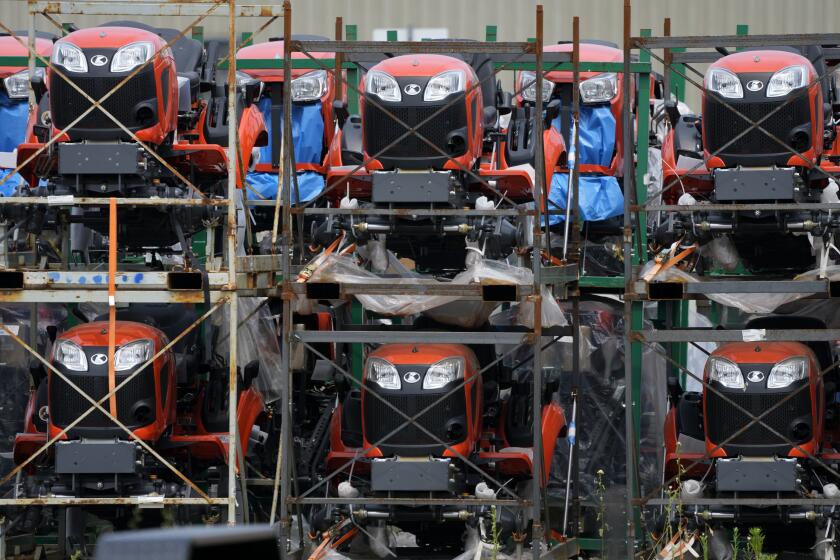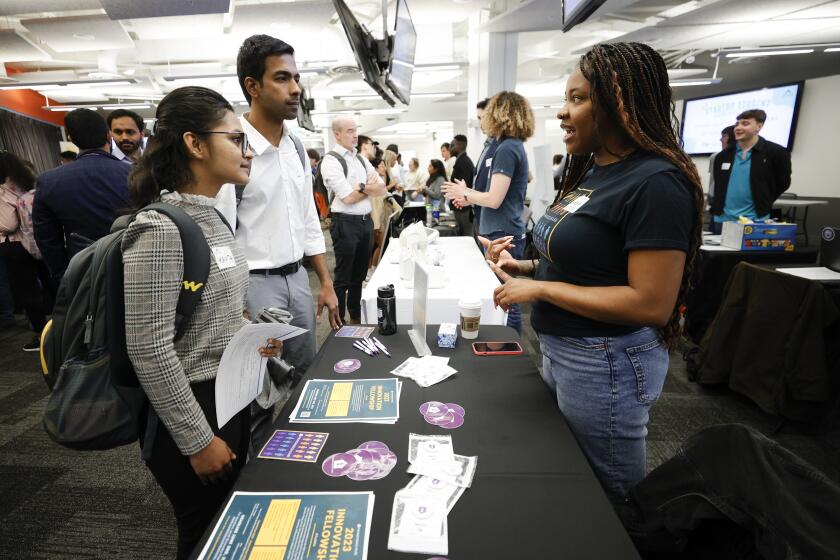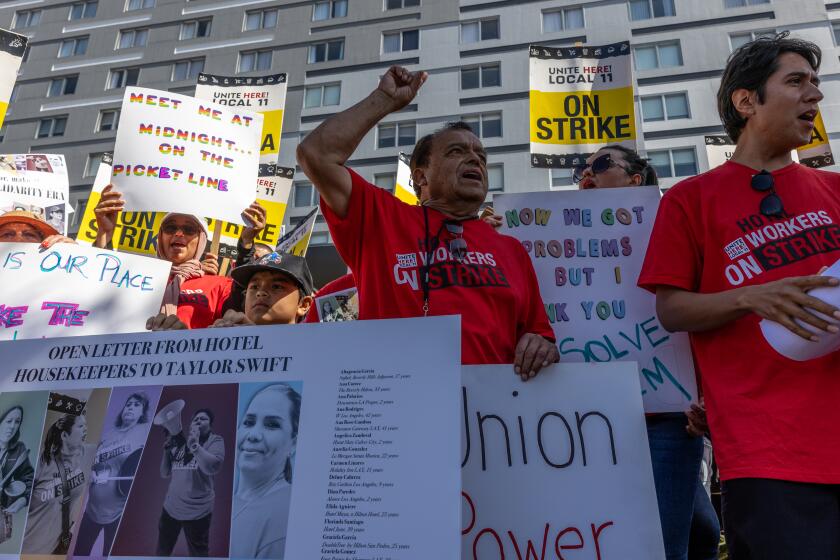A ‘rolling recession’ or a ‘richcession’ might spare the U.S. economy from a full-scale downturn

Despite more than a year of widespread warnings that a recession was near, America’s economy is, if anything, accelerating.
Even as the Federal Reserve has sent borrowing costs sharply higher, the economy’s resilience has been on plain display: Consumers keep spending, and employers keep hiring. Inflation has reached its lowest level in two years, helping Americans stretch their paychecks.
The government estimated Thursday that the economy expanded at a solid 2.4% annual rate in the April-June quarter, an unexpected pickup from the 2% pace in the first quarter. Businesses helped drive the growth, with robust investment in equipment, software and buildings.
The latest snapshot of the economy coincides with rising sentiment that it may achieve an elusive “soft landing,” in which growth slows and inflation falls without igniting a full-blown recession.
Analysts point to two trends that might help stave off an economic contraction.
A majority of the nation’s business economists expect a U.S. recession to begin later this year than they had previously forecast, after a series of reports have pointed to a surprisingly resilient economy despite steadily higher interest rates.
Some say the economy is experiencing a “rolling recession,” a circumstance in which only some industries shrink while the overall economy manages to stay above water.
Others think the nation might have experienced what they call a “richcession”: Major job cuts, they note, have been concentrated in higher-paying industries like technology and finance, heavy with professional workers who generally have the financial cushions to withstand layoffs. Job cuts in those fields, as a result, are less likely to sink the overall economy.
Still, threats loom. The Fed raised its key interest rate on Wednesday to about 5.3% — its highest level in 22 years — and may do so again before the end of this year. Those rate increases impose heavy borrowing costs on consumers and businesses. That’s why some economists caution that a full-blown recession may still occur.
“The Fed will keep pushing until it fixes the inflation issue,” said Yelena Shulyatyeva, an economist at BNP Paribas.
Here’s how it could all play out in the United States:
The U.S. economy surprisingly accelerated to a 2.4% annual growth rate from April through June, showing continued resilience in the face of steadily higher interest rates resulting from the Federal Reserve’s 16-month-long fight to bring down inflation.
It’s a rolling recession
When different sectors of the economy take their turns contracting, with some declining while others keep expanding, it’s sometimes called a rolling recession. In that way, the economy as a whole manages to avoid a full-fledged recession.
The housing industry was the first to suffer a tailspin after the Fed began sharply raising interest rates 16 months ago. As mortgage rates nearly doubled, home sales plunged. They’re now 19% lower than they were a year ago. Manufacturing soon followed. And while it hasn’t fared as badly as housing, factory production is down from a year earlier.
And this spring, the technology industry suffered a slump, too. With the pandemic receding, Americans were spending less time online and instead resumed shopping at physical stores and going to restaurants more frequently. That trend forced sharp job cuts among tech companies such as Facebook’s parent Meta, video conferencing provider Zoom and Google.
The recent mass layoffs at Google, Microsoft, Amazon and Meta came as a shock to thousands of workers who’d never experienced upheaval in the tech sector.
At the same time, consumers ramped up their spending on travel and entertainment, buoying the economy’s vast service sector and offsetting the difficulties in other sectors. Economists say they expect such spending to slow later this year as the savings that many households had amassed during the pandemic continue to shrink.
Yet by then, housing may have rebounded enough to pick up the baton and drive economic growth. And other sectors should continue to expand, providing a foundation for overall growth. Krishna Guha, an analyst at Evercore ISI, notes that some areas of the economy — from education to government to healthcare — are not so sensitive to higher interest rates, which is why they are still hiring and probably will keep doing so.
If the U.S. economy achieves a soft landing, Guha said, “we think these rolling sectoral recessions will be a big part of the story.”
It’s a ‘richcession’
Affluent Americans aren’t exactly suffering, particularly as the stock market has rallied this year. Yet it’s also true that the bulk of high-profile job losses that began last year have been concentrated in higher paying professions. That pattern is different from what typically happens in recessions: Lower-paying jobs, in areas like restaurants and retail, are usually the first to be lost and often in depressingly large numbers.
As L.A.’s hospitality industry welcomes Taylor Swift’s Eras tour and the business it will bring, striking hotel workers called on the pop star to join their cause.
That’s because in most downturns, as Americans start to pull back on spending, restaurants, hotels and retailers lay off waves of workers. As fewer people buy homes, many construction workers are thrown out of work. Sales of high-priced manufactured goods such as cars and appliances tend to fall, leading to job losses at factories.
This time, so far, it hasn’t happened that way. Restaurants, bars and hotels are still hiring — in fact, they have been a major driver of job gains. And to the surprise of labor market experts, construction companies are also still adding workers despite higher borrowing rates, which often discourage residential and commercial building.
Instead, layoffs have been striking mainly white-collar and professional occupations. Uber Technologies has said it will cut 200 of its recruiters. GrubHub announced 400 layoffs among the delivery company’s corporate jobs. Financial and media companies are also struggling, with Citibank saying it shed 1,600 workers in the April-June quarter. Ford Motor Co. said it was laying off several hundred engineers after cutting 3,000 white collar jobs last year.
Many of the affected employees are well-educated and likely to find new jobs relatively quickly, economists say, helping keep unemployment down despite the layoffs. Right now, for example, the federal government, as well as employers in the hotel, retail and even railroad industries are seeking to hire people who have been laid off from the tech giants.
Companies like Chipotle and Disney are testing the limits of the three-day in-office week that’s emerged as the post-pandemic standard as ‘RTO creep’ sets in.
Tom Barkin, president of the Federal Reserve Bank of Richmond in Virginia, notes that affluent workers typically have savings they can draw upon after losing a job, enabling them to keep spending and fueling the economy. For that reason, Barkin suggested, white-collar job losses don’t tend to weaken consumer spending as much as losses experienced by blue-collar workers do.
“It’s easy to imagine that this might be a different sort of softening labor market ... that has a different kind of impact, both on demand and on things like the unemployment rate than your normal weakening,” Barkin said in an interview with the Associated Press.
Or maybe no recession
The most optimistic economists say they’re growing more hopeful that a recession can be avoided, even if the Fed keeps interest rates at a peak for months to come.
They point out that a range of recent economic data has come in better than expected. Most notably, hiring has stayed surprisingly resilient, with U.S. employers adding a robust average of roughly 300,000 jobs a month over the past six months and the unemployment rate, at 3.6%, still near a half-century low.
Manufacturing, too, is defying gloomy expectations. The government reported that companies stepped up their orders of industrial machinery, rail cars, computers and other long-lasting goods.
Many analysts have been encouraged because some threats to the economy haven’t turned out to be as damaging as feared — or haven’t surfaced at all. The fight in Congress, for example, over the government’s borrowing limit, which could have triggered a default on Treasury securities, was resolved last month without much disruption in financial markets or discernible impact on the economy.
And so far, the banking turmoil that occurred last spring after the collapse of Silicon Valley Bank has largely been contained and doesn’t appear to be weakening the economy.
Jan Hatzius, chief economist at Goldman Sachs, said that the ebbing of such threats led him to mark down the likelihood of a recession within the next 12 months from 35% to just 20%.
Other economists point out that the economy doesn’t face the types of dangerous imbalances or events that have ignited some recent recessions, such as the stock market bubble in 2001 or the housing bubble in 2008.
“The risk of recession is receding, rapidly,” said Neil Dutta, an economist at Renaissance Macro. Whether we are having a rolling recession or “richcession,” he said, “If you have to call it different names, it’s not a recession.”
More to Read
Inside the business of entertainment
The Wide Shot brings you news, analysis and insights on everything from streaming wars to production — and what it all means for the future.
You may occasionally receive promotional content from the Los Angeles Times.















